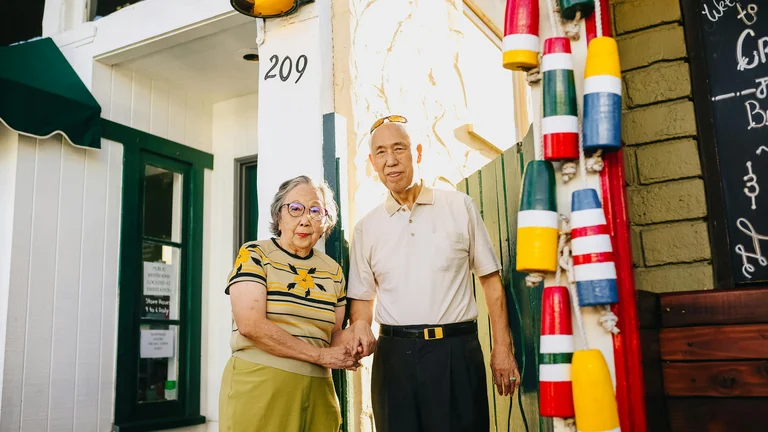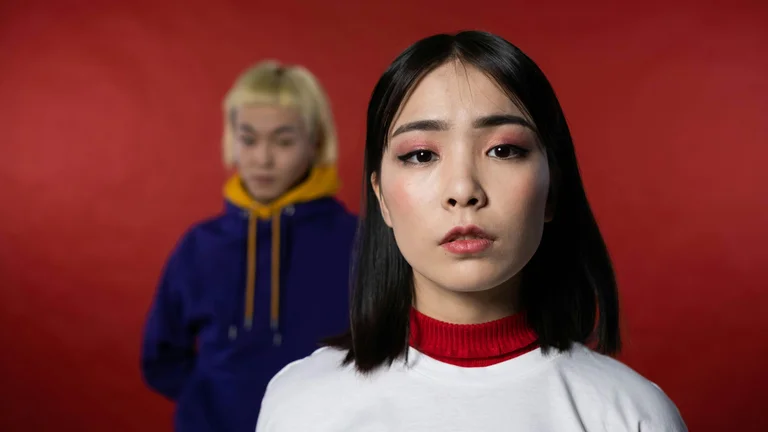The Enduring Allure of K-Drama Couples and Their Chemistry

Korean dramas, popularly known as K-Dramas, have captivated global audiences with their unique storytelling, compelling characters, and emotional depth. Among the many elements that make these dramas irresistible, the chemistry between lead couples often stands out as the central, unforgettable factor. Chemistry in this context refers to the palpable connection that transcends script lines, visible in subtle glances, shared silences, and electric moments that keep viewers emotionally hooked. This chemistry isn’t a mere result of good acting but is an intricate blend of casting, direction, writing, and the authentic interactions between actors. The sweetest chemistry is that which layers vulnerability, spontaneity, tension, comfort, and passion in ways that invite empathy and longing in viewers.
Understanding what fuels the sweetest chemistry in K-Drama couples requires examining how their relationships evolve on-screen, how the actors manifest emotional authenticity, and how the narrative structures support their growth. Coupling this with cultural nuances of Korean romance depiction, such as the frequent emphasis on subtle expressions of affection, societal pressures, and growth through mutual challenges, creates a rich palette for exploring this phenomenon.
This deep dive explores multiple iconic K-Drama couples recognized for their exceptionally sweet chemistry. It illuminates the attributes that make their relationships unforgettable and suggests how these portrayals shape audience expectations and the genre’s romantic standards globally.
Unveiling the Dynamics Behind Sweet Chemistry in K-Dramas
Sweet chemistry doesn’t arise merely from romantic gestures or scripted moments. Instead, it represents a complex interaction of scripted dialogue, actor improvisation, and directorial nuance that together manifest as believable intimacy. Often, the most compelling chemistry hinges on contrasts — personalities that balance, conflict, and complement each other, fostering emotional tension and ultimate resolution.
For example, a typically reserved female lead paired with a cheeky yet caring male lead forms a classic setup that allows for both conflict and tender moments to unfold naturally. These interactions offer viewers a journey that feels genuine, not manufactured. The slow buildup of connection, shared vulnerabilities, and moments of crisis jointly catalyze chemistry.
Beyond personality contrasts, timing and pacing profoundly influence chemistry. Extended screen time allowing subtle moments to breathe—shared smiles, awkward silences, casual touches—build familiarity believably. This slow burn approach contrasts with instantaneous conquest stories, making the eventual union feel earned and sweet. The investment of viewers emotionally over weeks of episodes then culminates in cathartic satisfaction.
Moreover, chemistry extends beyond romantic interactions. Supporting characters, narrative context, and visual symbolism (such as seasonal backdrops or recurring motifs) enhance the emotional texture surrounding couples. These elements provide layers that make chemistry multifaceted rather than one-dimensional.
In K-Dramas, physical proximity, eye contact, and body language interplay with dialogue to communicate undercurrents of attraction or tension. Actors’ abilities to convey emotions unspoken—through a glance or a shift in gesture—amplify the intimacy felt by the audience. This subtlety often becomes the signature of the sweetest on-screen couples.
Iconic K-Drama Couples Exemplifying Sweet Chemistry
Certain couples have achieved legendary status due to their unforgettable chemistry. This section provides in-depth profiles of select couples celebrated for the authentic and sweet connection that defined their dramas.
1. Goblin (Kim Shin & Ji Eun-Tak) from "Guardian: The Lonely and Great God"
One of the most iconic couples in K-Drama history, Goblin and Ji Eun-Tak present a relationship that transcends time and fate. Their chemistry combines supernatural elements with deeply human emotions. Throughout the drama, their interactions shift from curiosity to profound emotional reliance, highlighted by shared moments of vulnerability where immortality and mortality collide.
Their connection is nuanced with bittersweet undertones, examining themes of destiny, loneliness, and healing through love. The actors’ performances showcase multifaceted emotions: playful teasing coexists with intense longing. Their chemistry resonates because it feels both grandiose and intimately personal.
2. Crash Landing on You (Yoon Se-ri & Ri Jeong-hyeok)
This couple’s chemistry shines through contrasts: a wealthy South Korean heiress unexpectedly landing in North Korea and a stoic army officer who becomes her protector. Their interactions blend humor, cultural barriers, trust-building, and profound emotional support. The slow-building trust between them grounds the romance authentically.
Actor synergy is crucial here; their on-screen presence morphs from polite distance to loving partnership organically. The delicate balance of vulnerability and courage combined with endearing shared moments—like simple meals or quiet conversations—cements their beloved status in the K-Drama romantic pantheon.
3. My Love from the Star (Do Min-Joon & Cheon Song-Yi)
With a narrative mixing sci-fi and romantic comedy, this couple effectively combines eccentric personality traits and undeniable attraction. The alien character's detached demeanor paired with the charismatic actress who is a top star creates a dynamic interplay of curiosity and compassion. Their chemistry carries a unique tension, born from their difference and the limited time they have together.
The actors’ ability to deliver comedic timing alongside tender moments gives life to a romance that feels both surreal and heartfelt. Their exchanges often subtly highlight loneliness masked by differing facades, creating empathy in viewers.
Important Factors That Build Sweet Chemistry in K-Dramas
Couples in K-Dramas demonstrate sweet chemistry because several components align harmoniously. This detailed analysis breaks down these essential factors:
- Actor Compatibility and Natural Interaction: Authentic chemistry often depends on how naturally actors connect with each other beyond scripted dialogues. Capturing casual interactions, improvisations, and mutual responsiveness enhances perceived intimacy.
- Character Arc and Development: Well-developed relationship stories, where leads face internal and external conflicts and evolve emotionally, provide space for chemistry to develop gradually and believably.
- Directional Vision and Cinematography: Direction choices such as camera angles emphasizing eye contact, use of soft lighting during romantic scenes, and background music heighten emotional impact and chemistry.
- Scriptwriting and Dialogue: Meaningful, subtle dialogue exchanges create deeper connections. Less overt and more nuanced expressions of affection often resonate stronger.
- Cultural Context: Korean cultural values reflected in respect, restraint, and multifaceted expressions of love shape the style of chemistry unique to K-Dramas.
These factors contribute individually and synergistically to the sweetness that defines the best K-Drama couples.
Guide to Recognizing Sweet Chemistry in New and Classic K-Drama Couples
For viewers and enthusiasts eager to identify or anticipate couples with sweet chemistry in K-Dramas, the following guide outlines key indicators and signs:
- Energy Synchronization: Observe how the leads' emotional rhythms align—do their moods and facial expressions harmonize naturally?
- Dialogue Depth: Look for thoughtful and meaningful exchanges rather than superficial—do conversations reveal vulnerability and mutual understanding?
- Non-Verbal Communication: Body language, subtle touches, and shared moments without words often communicate the most poignant chemistry.
- Conflict and Resolution: Chemistry strengthens in how leads manage disagreements or challenges—does their dynamic evolve through adversity?
- Screen Time and Intimacy Build-Up: Slow development and gradual intimacy often mean chemistry will feel earned and sweet rather than rushed.
By applying these principles, viewers can engage more deeply with narratives and appreciate the nuances that create sweet chemistry.
Table Comparing Characteristics of Iconic K-Drama Couples Known for Sweet Chemistry
| Couple (Drama) | Character Traits | Chemistry Style | Relationship Development | Signature Moments |
|---|---|---|---|---|
| Kim Shin & Ji Eun-Tak (Goblin) | Immortal and mortal; mysterious & earnest | Bittersweet, fated love | Slow build, overcoming fate and loneliness | Shared umbrella scene; calligraphy love notes |
| Yoon Se-ri & Ri Jeong-hyeok (Crash Landing on You) | Heiress & soldier; bold & reserved | Playful, supportive, trust-driven | Gradual trust through hardship | Cooking together; hidden glances at night |
| Do Min-Joon & Cheon Song-Yi (My Love from the Star) | Alien with human traits & famous actress; detached & vivacious | Tense, witty, emotional depth | Rapid affection with underlying melancholy | Moonlit rooftop confessions; spontaneous gestures |
| Park Sae-Ro-Yi & Jo Yi-seo (Itaewon Class) | Determined entrepreneur & brilliant manager; passionate & sharp | Fiery, respectful, inspiring | Building partnership amidst obstacles | Walking through the streets sharing dreams |
| Han Ji-Pyeong & Oh Yeon-Joo (Flower of Evil) | Detective & profiler; complex & caring | Intense, layered, protective | Gradually uncovering truth and emotions | Hospital scene highlighting mutual trust |
Step-by-Step to Cultivate Sweet Chemistry When Watching K-Dramas
Experiencing chemistry as an audience requires more than passive viewing. This step-by-step guide helps viewers attune to the nuances that define sweet chemistry between K-Drama couples:
- 1. Observe Gestures and Micro-Expressions: Notice small facial movements, hesitant smiles, or subtle eye shifts that reveal unspoken feelings.
- 2. Pay Attention to Silence and Pauses: Moments of silence, when not awkward, often carry significant emotional weight.
- 3. Follow Character Growth: Track how the characters' feelings evolve, especially when they overcome fears or prejudices related to their love interest.
- 4. Reflect on Dialogue Subtext: Consider what’s implied rather than explicitly stated in conversations.
- 5. Analyze Interaction Context: How external pressures or supporting cast reactions affect the couple’s dynamic.
This approach deepens appreciation for the complexity behind on-screen sweetness.
Cultural Influences Impacting Romantic Chemistry in K-Dramas
Korean culture, deeply embedded in its media, shapes how romance and chemistry are expressed in dramas. The significance placed on restraint, respect, and nuanced emotional expressions contrasts with more overt Western portrayals. In K-Dramas, love is frequently shown through indirect affections: helping with mundane tasks, protecting honor, or enduring hardships together.
Family approval, social status, and unspoken obligations often complicate romantic progression, adding tension and depth. This relational complexity demands that chemistry reflects not only passion but also patience, understanding, and sacrifice.
Furthermore, Korea’s Confucian-influenced social framework emphasizes harmony and collective values, which can temper romantic overtures and lend a refined subtlety to relationships. Actors and writers craft interactions that suggest affection without sweeping declarations, making those brief moments of intimacy more precious and poignant.
Examples of Recent K-Drama Couples with Notable Chemistry and Why They Work
Recent K-Dramas have introduced couples whose chemistry adeptly balances tradition and modernity, reflecting evolving social values and viewer expectations.
1. Lee Min-ho & Kim Go-eun in "The King: Eternal Monarch" present a parallel universe romance with tension between duty and desire. Their chemistry thrives on contrasts — royal obligations versus personal freedom — and delicate emotional undercurrents showcased in restrained yet powerful gazes.
2. Seo In-guk & Jung So-min from "Doom at Your Service" bring complexity by blending fantastical elements with existential themes. Their chemistry is rooted in emotional healing and acceptance, navigating pain and hope with sincere vulnerability.
3. Kim Soo-hyun & Seo Ye-ji in "It's Okay to Not Be Okay" feature a romance addressing mental health and emotional scars. Their tightly woven chemistry evolves through emotional breakthroughs, revealing how love acts as therapy and reconciliation.
Challenges Producers Face in Capturing Sweet Chemistry and Its Impact on Audience Engagement
Producing authentic romantic chemistry on-screen entails overcoming several challenges. Foremost is the casting process — pairing actors who genuinely click can be unpredictable despite individual talent. Chemistry cannot be fabricated solely through rehearsals or script adjustments; it depends on interpersonal dynamics and timing.
Scriptwriters must also balance romantic development with plot progression, ensuring romance complements rather than overwhelms the storyline. Misplaced focus on romance can risk alienating audiences if the emotional connection feels forced.
Directors play a pivotal role in guiding actor interactions, framing scenes to optimize intimacy cues, and controlling pacing. However, technical constraints like shooting schedules, location logistics, and network demands can limit opportunities for nuanced performances.
The resultant chemistry significantly affects audience commitment and drama popularity, often driving international fandoms and social media buzz. Producers increasingly recognize this, investing more in chemistry tests and extended rehearsals.
The Role of Supporting Characters in Enhancing the Main Couple’s Chemistry
Supporting characters indirectly influence how the main couple’s chemistry is perceived and developed. Friends, family, rivals, or side loves serve as foils, advisors, or catalysts. Conflicts or camaraderie involving these secondary characters provide context that deepens the leads’ relationship, emphasizing unity or contrast.
For instance, a jealous rival might highlight the protective instincts between leads, while a loyal friend could facilitate understanding through candid advice. These interactions create layered storytelling, enriching the sweet chemistry by examining it from different angles.
Additionally, supporting characters often carry narrative weight, enabling the main couple’s emotional moments to feel more grounded within the drama’s social ecosystem. Their reactions shape viewer perceptions, reinforcing or challenging the couple’s bond authenticity.
List of Tips for Writers and Producers to Create Couples with Sweet Chemistry in K-Dramas
- Cast actors with complementary styles and encourage natural interaction during rehearsals.
- Develop nuanced character backstories that allow emotional depth and growth.
- Incorporate non-verbal communication cues to enrich intimacy.
- Utilize slow-burn relationship arcs that prioritize gradual trust and emotional revelations.
- Balance romance with other plot elements to maintain narrative coherence.
- Employ symbolic cinematography to visually reinforce romantic themes.
- Respect cultural values on restraint and subtle affection to enhance authenticity.
- Create realistic conflicts that challenge but ultimately strengthen the couple’s bond.
Following these guidelines can elevate the emotional impact and memorability of K-Drama couples.
FAQ - K-Drama Couples with the Sweetest Chemistry
What exactly defines 'sweet chemistry' between K-Drama couples?
Sweet chemistry in K-Dramas is defined by a believable emotional connection between the lead characters, demonstrated through subtle gestures, authentic interactions, and a gradual build-up of affection that resonates emotionally with viewers. It's more than scripted romance; it involves natural actor synergy and narrative support.
Which K-Drama couples are most famous for their sweet chemistry?
Notable couples include Kim Shin & Ji Eun-Tak from 'Goblin,' Yoon Se-ri & Ri Jeong-hyeok from 'Crash Landing on You,' and Do Min-Joon & Cheon Song-Yi from 'My Love from the Star.' These couples exemplify different styles of sweet chemistry, from fated love to playful, trust-based relationships.
How do cultural factors affect romantic chemistry in Korean dramas?
Cultural emphasis on restraint, respect, and nuanced emotional expression influences K-Drama chemistry by shaping subtle romantic gestures rather than explicit declarations. Korean social values introduce complexities such as family and societal expectations, which deepen relationship portrayal and chemistry development.
Can producers guarantee sweet chemistry between leads?
While producers can facilitate potential chemistry by careful casting, rehearsals, and scriptwriting, genuine chemistry depends heavily on actor compatibility and natural interaction, which cannot be fully guaranteed or manufactured.
How do supporting characters influence a couple's chemistry?
Supporting characters add context and dynamic tension or support to a couple’s relationship. Their interactions with leads often highlight or contrast the main couple’s emotional connection, thus enriching the perceived chemistry and overall narrative depth.
K-Drama couples with the sweetest chemistry create unforgettable romantic narratives through authentic connections, nuanced performances, and culturally influenced subtlety. Iconic pairs like those from 'Goblin' and 'Crash Landing on You' exemplify slow-building, believable intimacy that deeply engages global audiences.
Sweet chemistry between K-Drama couples emerges from a multifaceted intersection of casting, narrative depth, cultural nuance, and authentic emotional portrayal. It hinges on believable interactions and gradual relationship development that resonate powerfully with viewers worldwide. Exploring iconic couples and dissecting their styles reveals that true chemistry blends vulnerability, tension, and mutual growth in ways that transcend the screen. As K-Dramas continue evolving, the quest for cultivating heartfelt and layered chemistry remains central to delivering unforgettable romantic stories.






